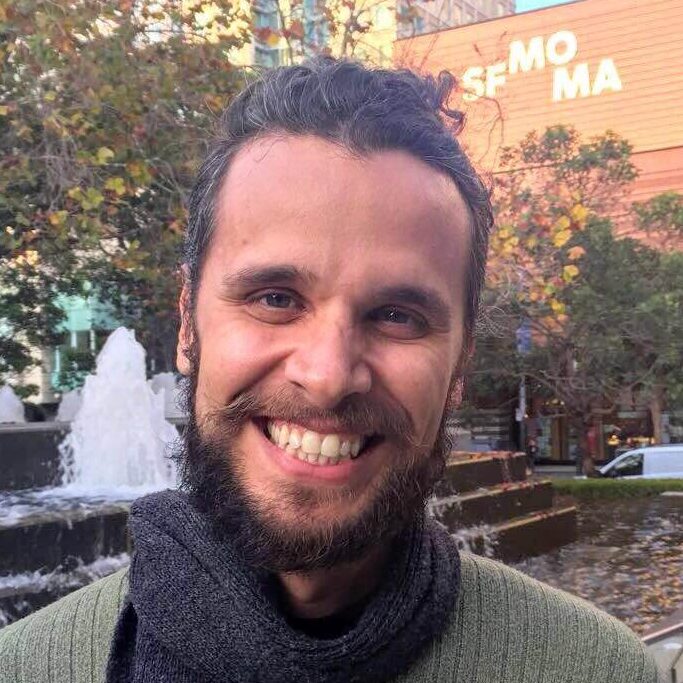- I still feel the tingling in my fingers to write more.
- The inspiration from other makers led me to create this website and be part of the “Building in Public” movement for the first time. Butterflies!!! ཐི༏ཋྀʚїɞ
- I’m still migrating all my content scattered across the web to this platform. I realized it’s really sad to see my work on platforms that will soon disappear or are owned by people I don’t resonate with.
- This is my second “/now” update, and I’m absolutely in love with this concept. I can see this reducing a lot my need for publishing stuff on social media.
- Big thanks to Rich Tabor for this WordPress template and inspiration.
- The inspiration from other makers led me to create this website and be part of the “Building in Public” movement for the first time. Butterflies!!! ཐི༏ཋྀʚїɞ
- Work
- Building Smart Keys, your smart keyboard to write with more confidence.
- Working on a desktop version because I need this so bad.
- Making Youper the most effective and safe AI for mental health
- Helping Prospera Mental Health with tech challenges.
- Building Smart Keys, your smart keyboard to write with more confidence.
- Vacation
- Looking for flights to Brazil (Mar/Apr)
- Volunteering
- Sustainable Walnut Creek: Planning Earth Month Events (April)
- Learning
- I paused my Learning Korean initiatives for now. Hangul is so, so beautiful. And also quite hard. I’ll return soon. Thank you, Ryan Estrada for these mnemonic drawings.
- Relaxing
- Saturdays you can find me having a delicious Omega at Rooted Poets Corner, at the beautiful PH Library.
- Trying to read less and less news. But reading more and more books.
- I’m missing so bad my dog in Brazil, so we decided to pet sit around bay area using TrustedHouseSitters, this is so cool, we can meet amazing people, pets and also new cities.
- Exercise
- I’m doing more quick runnings than riding, quite sad to be honest, I’m missing riding with Peaceful Pedalers and as Training Ride Leader with Wildcats for ALC 2025
Books Bragging Building in Public Cycling Food for thought Games Interviews Journal Lucid Dreaming Mental Health Movies Open Goals Poetry Productivity Quotes Ranting Smart Keys Sustainability Travel Youper
-
Journal: Fev 2025
-
The Return of the Fly

Close-up of a Black soldier Fly by Oktavianus Mulyadi Fifteen years ago, I went down a rabbit hole that was mostly larvae. Specifically, Hermetia illucens, better known as Black Soldier Flies. I was obsessed. Not in the “cute pet bug” way, but in the “what if this insect could help save the world” kind of way. I read everything I could find, told anyone who would listen, and probably came uncomfortably close to trying one on toast.
Then, like most fixations that aren’t actively paying my rent, it faded into the background. The flies flew away and ruined my neighbor’s orange production. 🤷♂️
And now here they are again.
They’re buzzing through headlines as the next big thing in sustainable food systems. The BBC recently put out a piece painting them as miracle workers. They eat food waste at astonishing speed, turn it into compost and protein, and don’t demand much in return. No water. No land. No feelings about being farmed. It’s the kind of efficiency that makes engineers giddy and environmentalists hopeful.
Here’s the article if you want the sunny version:
😊 The little bug with a big appetite – BBCBut of course, it’s never that simple.
Another group, the Stray Dog Institute, offers a colder take. They argue that industrializing insect farming doesn’t magically clean up the ethics or the waste problem. Feeding bugs to livestock still props up factory farming. And food waste isn’t just a disposal issue. It’s systemic. Solving it with bugs may just be tech-washing a deeper problem.
Their article is here:
😞 Black Soldier Flies Are Not an Ideal Solution – Stray Dog InstituteSo where does that leave me?
Still weirdly into these flies. Still not eating them. Still wondering if our future involves more systems thinking and fewer silver bullets. I think both articles are worth reading. The optimism and the criticism. The innovation and the discomfort. That’s usually where the real stuff lives.
What fascinates me most isn’t just the bugs. It’s the recurring pattern. We find something promising. We scale it. Then we realize scaling anything comes with trade-offs. Then we’re left to decide if the trade-offs are worth it or if we’re just trying to avoid the harder questions.
For now, I’m just glad the flies are back. And that I still care.
-
Store Conversion? More like Store Distraction.
Apple’s polished and carefully curated Benchmark Metrics are an illusion, designed to impress on paper but often disconnected from real-world performance. In other words, BS.
Apple lays out a glossy percentile system, letting you compare your app’s metrics to others in the same category. It shows if you’re brushing shoulders with top performers (the 75th percentile) or stuck somewhere near the bottom (the 25th percentile). On the surface, it sounds super handy, like a leaderboard in a video game. In reality, some reports can be misleading. Sure, it feels good when you see your app “performing as well as top apps,” until you realize some numbers can be skewed by ads, special promotions, and other wildcards that don’t reflect genuine traction.
I discovered that the hard way while tinkering on Smart Keys, an AI-powered keyboard I’ve been building to help people (especially myself) type faster and smarter. I was feeling way too proud of myself as I rearranged screenshots, polished keywords, and declared I’d cracked the code. The numbers insisted I was beating the top apps by a mile. Then I realized I was clinging to a metric that was all style, zero substance.
I obsessed over four data points, hoping my “genius” would unlock the secrets of the App Store. Here’s the quick breakdown, served with a side of humble pie.

1. Store Conversion: The most BS of all
I treated this like my personal high score, proudly pointing at it like it was proof I had the Midas touch. Turns out it’s mostly driven by ads, the brute force of a solid marketing push, and unpredictable factors like being featured on popular blogs.
You can test every ASO tweak in the book, but nothing outdoes a well-funded campaign. That dose of reality bruised my ego, especially when I realized I’d been celebrating a metric that anyone with a decent ad budget could inflate.
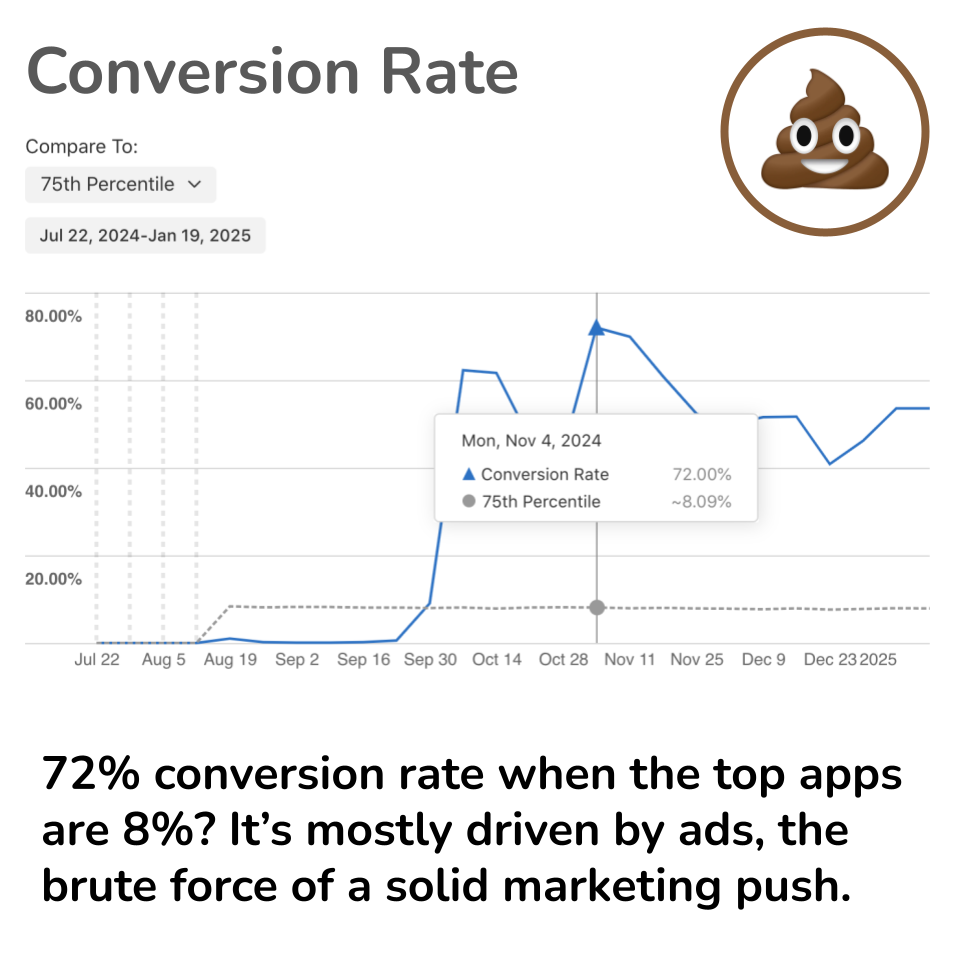
2. Proceeds per Paying User: Almost BS
This one fooled me for a while. It’s like checking your salary and forgetting about rent. Sure, “Proceeds per Paying User” looks impressive at a glance, but it hides the reality of how much you spent to acquire those users. If each paying user costs you three times what they bring in, you’re basically throwing money into a bonfire.
Nothing bursts your revenue bubble faster than realizing your lunch budget is leftover ramen packets because you blew all your cash on ads.
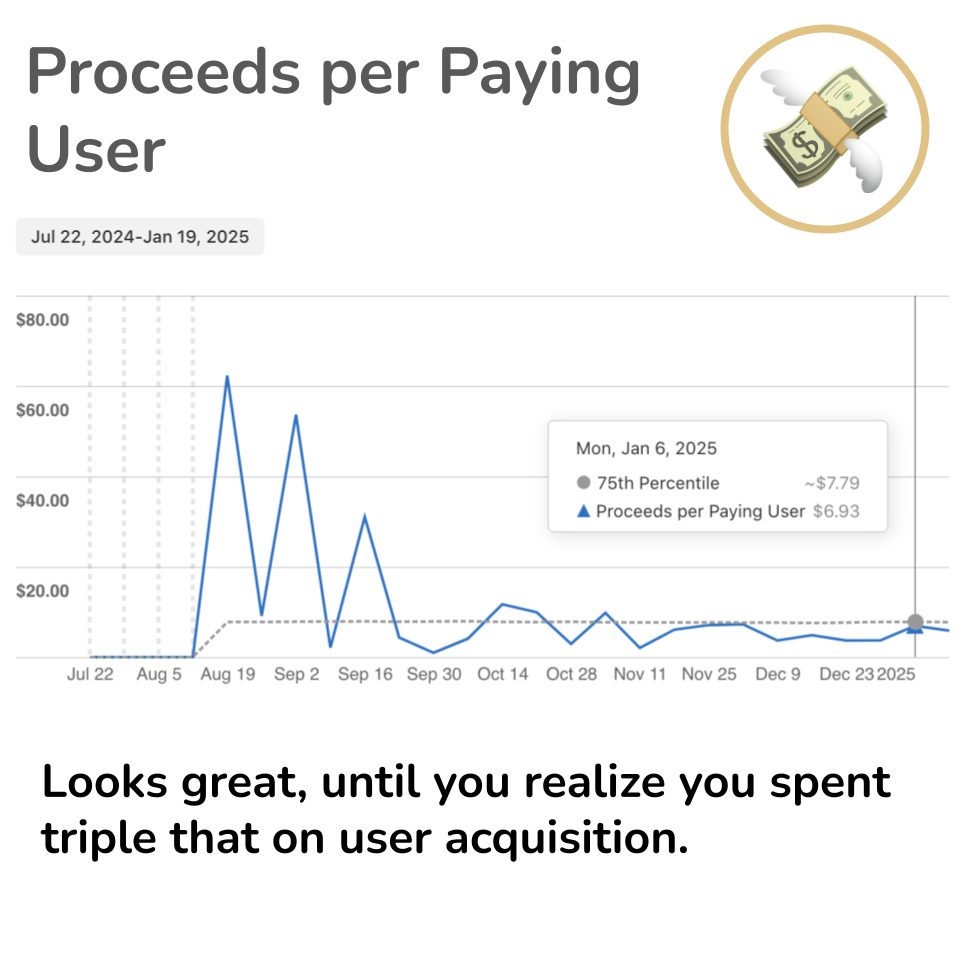
3. Crashes: Gold
This is where I got a much-needed wake-up call. Smart Keys had an onboarding crash bug that nearly drowned my starry-eyed dreams. On a small team, testing across all devices and iOS versions is no walk in the park, so the crash rate ended up being my loudest alarm. It let me catch the bug before a wave of 1-star reviews hit.
I’d rather stub my toe in the dark than face that. Crashes might not look sexy on a dashboard, but they show you if your app is on fire before everyone runs for the exits.
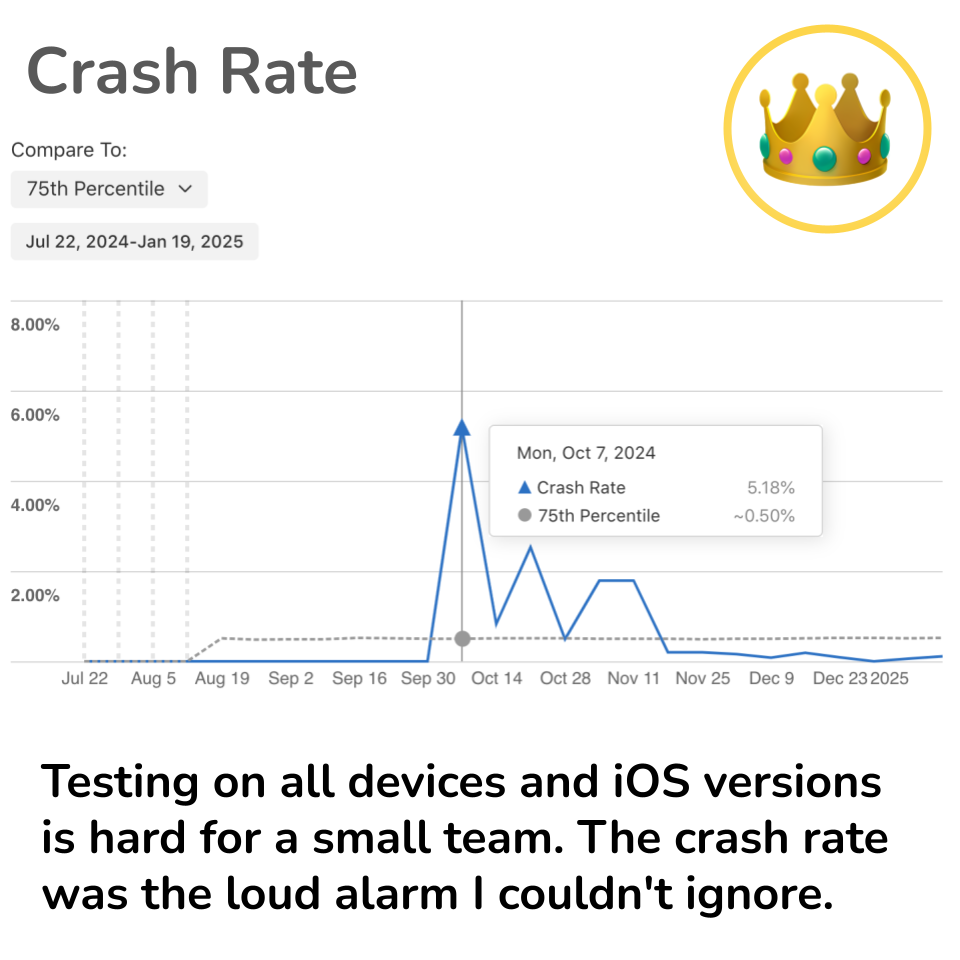
4. Retention (D1, D7, D28): Be patient
This one’s a slow burn that checks if people actually come back for more. Early on, I’d glance at the retention numbers and assume folks would stick around forever.
Then I got a reality check: trial periods, paywalls, or freemium strategies can skew these stats, and retention is a marathon, not a sprint. I’m still catching my breath, but at least I know if people keep showing up, I’m doing something right.
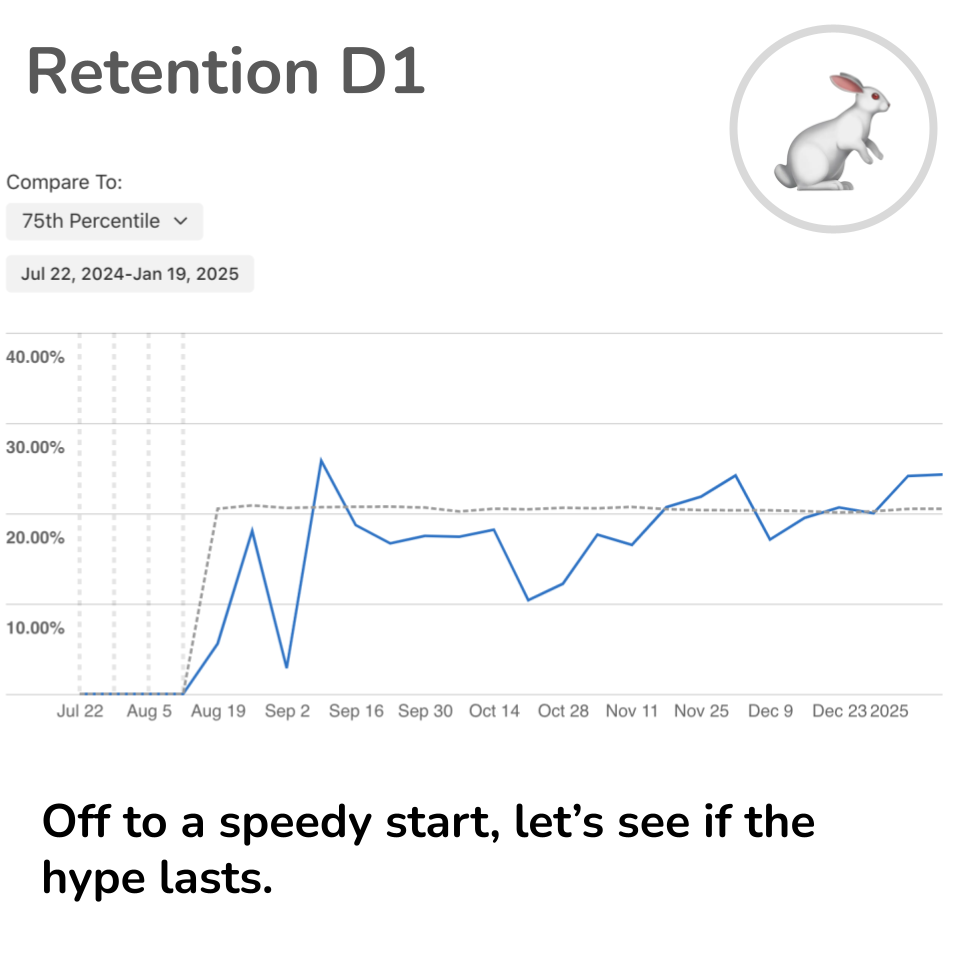
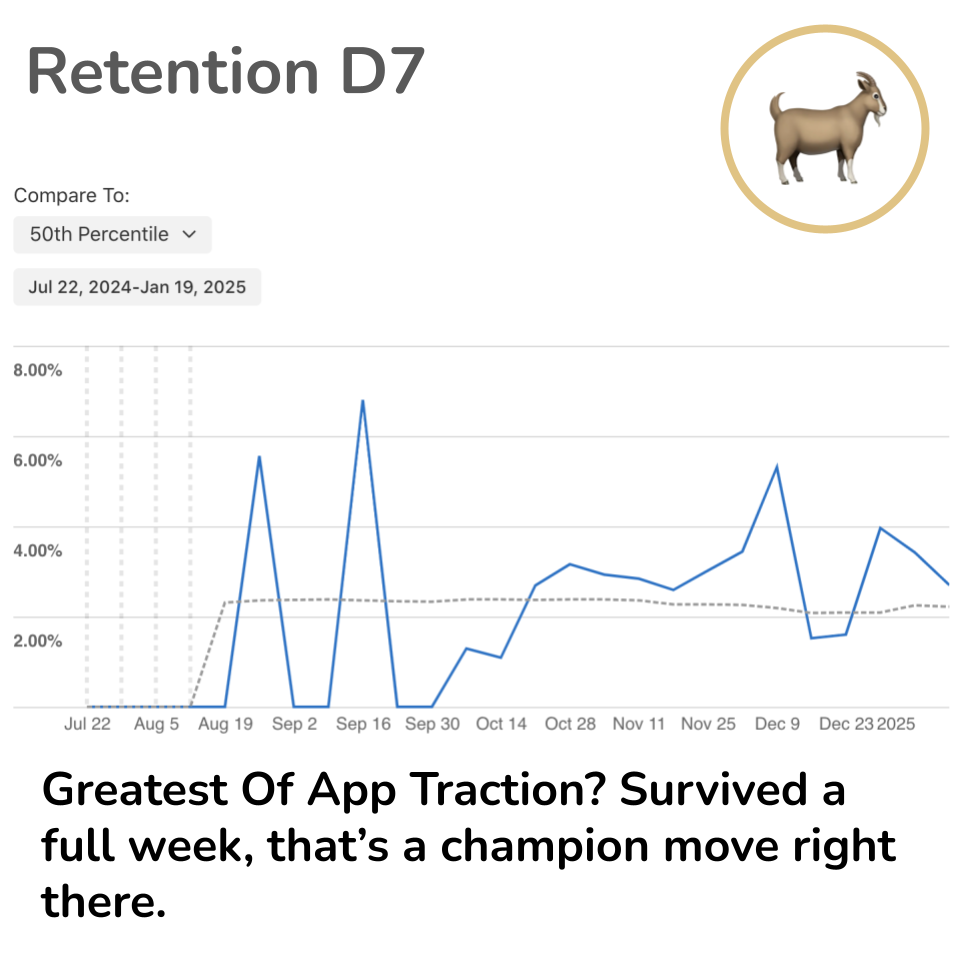
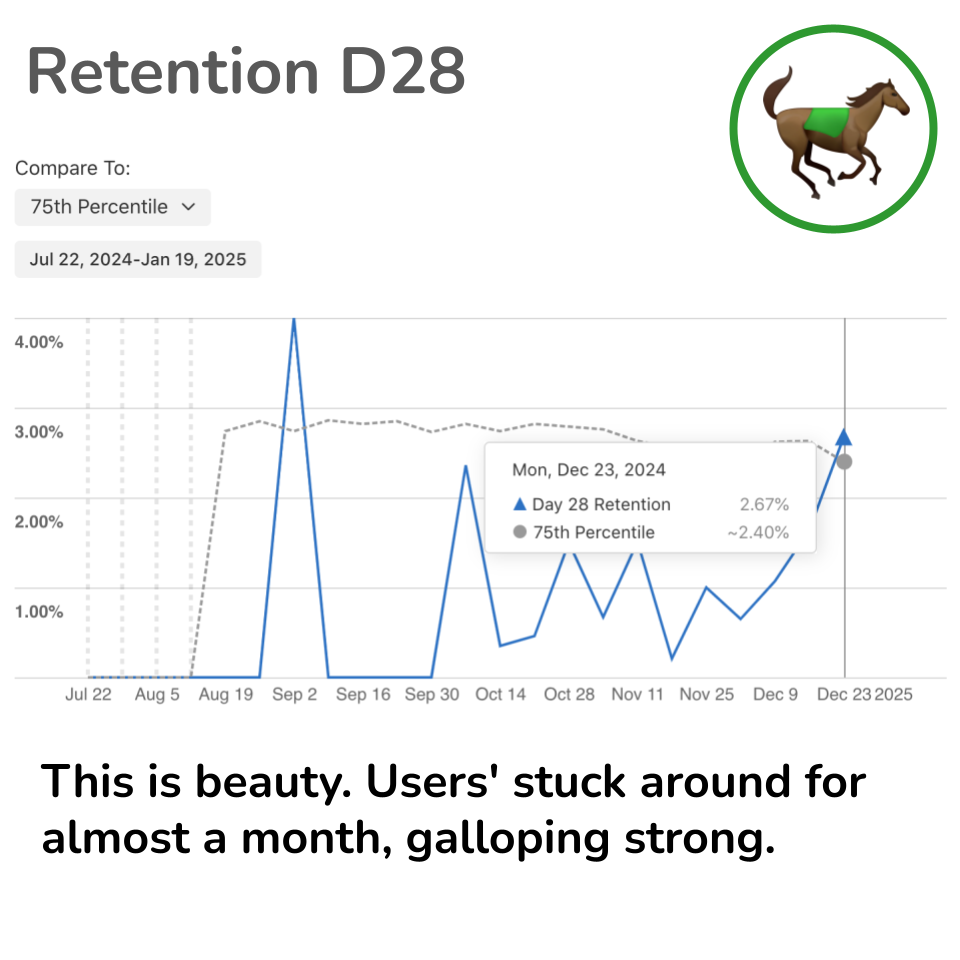
The truth is, these metrics can make you feel important, but they don’t tell the whole story. I’ve been learning more from watching the folks at Every and other brave souls building in public. They share real stories about triumphs and ugly mistakes, ASO magic tricks, and it’s oddly comforting to see the raw, unfiltered process.
I’m trying to do the same here with Smart Keys, focusing on real-world user feedback that directly shapes my updates and features. If you’re curious how all this no-BS talk translates into an actual product, give Smart Keys a try, or keep an eye on my #BuildingInPublic journey to see how it evolves.
Is any of these metrics relevant to you? Which metric should I dive into next?
Have a good week filled with no-BS insights.
(っ-,-)つ𐂃 -
Can Smart Keys translate other people’s messages?
Here’s how I started talking to people on RedNote Xiaohongshu (小红书) without knowing Mandarin.

Well, everything started when I first showed Smart Keys to my psychologist friend, Javad Salehi Fadardi, he hit me with a question I didn’t see coming: “Can it translate other people’s messages?”
“No,” I said, feeling pretty confident. “That’s impossible.”
Then he hit me with one of those classic psychologist one-liners designed to keep you up at night: “What makes you believe that?”
I had no answer. But the question burrowed into my brain and refused to leave.
Around the same time, I started getting DMs on Instagram from users asking for the exact same feature.
Dozens of them. At first, I brushed it off. Smart Keys wasn’t built for translating conversations in languages you don’t understand, it’s meant to help you sound fluent in languages you kind of already know.
But last week, I was checking out RedNote Xiaohongshu (following TikTok refugees) and decided to strike up a conversation with someone in Chinese.
That’s when it hit me: struggling through copying and pasting user’s messages while trying to have a real-time conversation is painful. That was it. The final push. I couldn’t ignore the signs anymore.
So now, Smart Keys can translate other people’s messages and suggest responses. All in just one click. It works with screenshots, photos, you name it. Just update the app to the latest version, go to Settings > Keyboard Options, and enable Screen Translator.
Big thanks to Javad for planting that seed of doubt and curiosity.
This one’s for you. -
No-BS Friday Metrics: Store Conversion Rate
App Store gurus love to talk about ASO tricks and how to squeeze every bit of conversion juice from the app store. But what if I told you it doesn’t really matter?
Smart Keys store conversion rate is over 50% while the best apps barely scrape 8%. So either I’m a wizard or this is a BS metric.

We, app builders, love the idea that some ASO tweak will be the magic bullet. A better subtitle, the right screenshots, a catchy promo text. Sure, those things help a little, but I’m sorry to say that you may be spending your time on the wrong task, they won’t move the needle in a meaningful way.
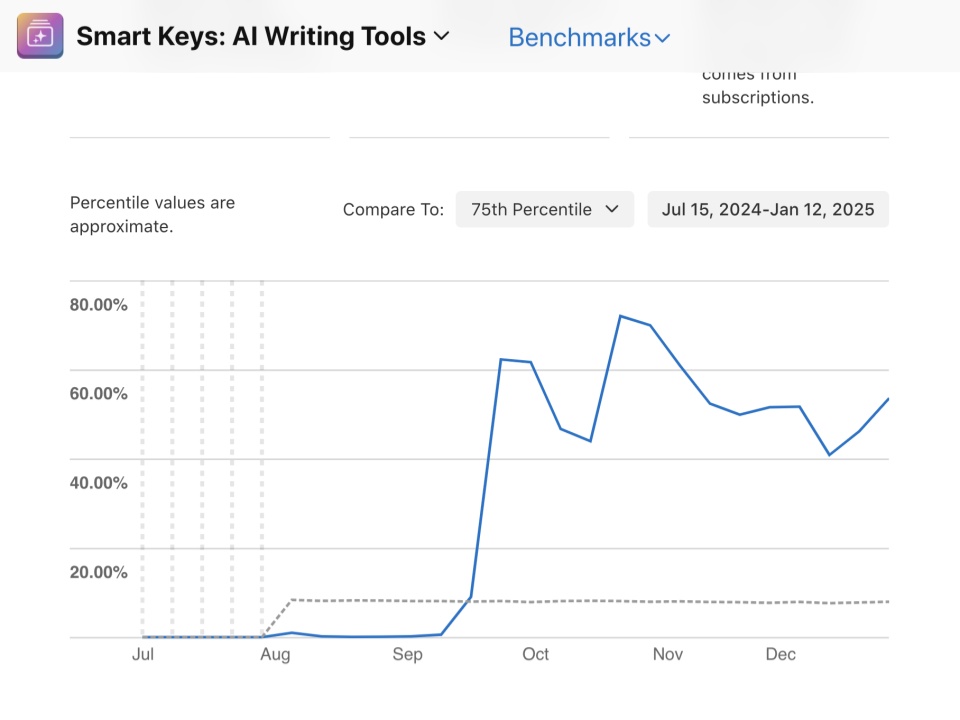
Then what? What actually happened in October that store conversion sky rocketed? What’s the big ASO secret?
It’s a three-letter word: Ads. No ASO magic tricks, no growth hacks, no overcomplicated strategy. just Ads iterations that started working well.
So is this store conversion rate relevant? not really. It looks good on a dashboard, to brag, but that’s about it. Focus on what actually drives growth, not vanity metrics that make you feel good but don’t pay the bills.
That’s it for today. Next Friday, I’ll dive into retention, the real deal.
Have a no-BS weekend. See ya. ✌️
